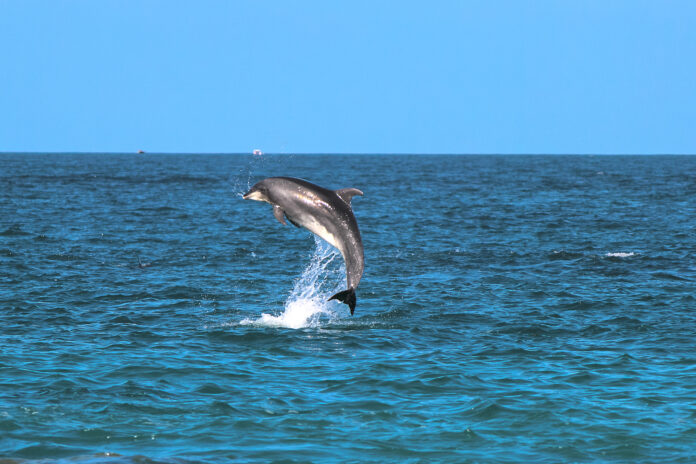Indus River Dolphin
The Indus River Dolphin: A Rare Treasure of South Asia
Outline of the Article
H1: The Indus River Dolphin: A Rare Treasure of South Asia
H2: Introduction
H3: A Glimpse into the Waters of the Indus
The article will show why the Indus River Dolphin stands apart from other species.
H2: History and Evolution
H3: Ancient Origins of the River Dolphin
H3: Evolutionary Differences from Oceanic Dolphins
H2: Physical Characteristics
H3: What Does the Indus Dolphin Look Like?
H3: Blind But Brilliant: Their Sonar Superpower
H2: Habitat and Distribution
H3: Life in the Indus River
H3: Current Geographical Range
H2: Behavior and Lifestyle
H3: How They Navigate Without Sight
H3: Social Behavior and Group Dynamics
H3: Feeding Habits and Favorite Meals
H2: Reproduction and Life Cycle
H3: Mating Rituals and Birthing Seasons
H3: Raising the Young
H2: Threats to the Indus River Dolphin
H3: Pollution and Habitat Destruction
H3: Fishing Nets and Accidental Trapping
H3: Dams and Water Diversions
H2: Conservation Efforts
H3: National and International Protection Measures
H3: Role of Local Communities
H3: How Tourism Can Help
H2: Why the Indus River Dolphin Matters
H3: Ecological Significance
H3: Cultural Importance in the Region
H2: How You Can Help
H3: Donations and NGOs
H3: Awareness and Advocacy
-
H2: Conclusion
-
H2: FAQs
-
H3: Are Indus River Dolphins really blind?
-
H3: How many Indus River Dolphins are left?
-
H3: Can you see Indus Dolphins in the wild?
-
H3: What do Indus River Dolphins eat?
-
H3: Are there other types of river dolphins?
-
The Indus River Dolphin: A Rare Treasure of South Asia
- Introduction
A Glimpse into the Waters of the Indus
The flowing waters of the Indus River in Pakistan support both life and historical elements and an unknown species known as the Indus River Dolphin. This endangered freshwater species survives in the region as the “Bhulan” and suffers from major visual impairment.Apart from other species the Indus River Dolphin Claims Unique Features
The Indus River Dolphin differs from playful dolphins which reside in sea and aquarium environments because it survived through evolutionary changes to live in opaque fast-moving rivers. Scientists describe this occurrence as both rare and exceptional because evolution created such a wonder. - History and Evolution
Ancient Origins of the River Dolphin
Research indicates that river dolphins parted from their oceanic relatives between 20 to 25 million years ago. Among the four freshwater dolphin species worldwide exists the Indus River Dolphin which scientists consider highly ancient.Evolutionary Differences from Oceanic Dolphins
These dolphins show distinct evolutionary changes from marine dolphins by developing their senses for poor visibility. Because of millions of years of evolution the dolphins exchanged vision in exchange for echolocation as their neck flexibility improved their ability to fit through narrow waterways that ocean dolphins cannot navigate.Physical Characteristics
What Does the Indus Dolphin Look Like?
The Indus dolphin has a lengthy pointed beak and an expanding body structure that ends with a rounded stomach area. Their maximum length reaches 2.5 meters (8.2 feet) and their weight scales to 100 kilograms (220 pounds). Their light gray to brownish hue enables the Indus Dolphins to match their body coloration with the river sediment.Blind But Brilliant: Their Sonar Superpower
They have no usable vision even though they hold some degree of light and dark recognition. These dolphins have-developed eyes which only recognize light and dark conditions thus they must depend entirely on echolocation for perceiving their environment. - Habitat and Distribution
Life in the Indus River
The main dwelling area of these dolphins extends across the Pakistani river section between Kotri and Sukkur barrages. These dolphins choose extensive water pools and gentle currents since these areas facilitate easy fishing activities alongside periodic air breathing.Current Geographical Range
These dolphins once inhabited the Indus River along with parts of the Ganges river system yet now they exist in only one-fifth of their former territory within Pakistan’s Indus River drainage basin.Behavior and Lifestyle
How They Navigate Without Sight
High-frequency click sounds function as sonar signals for these dolphins to detect fish as well as riverbed structures and other underwater objects. Their echolocation system enables detection of waterbound objects in spite of heavy sediment in water.Social Behavior and Group Dynamics
Organizations of this dolphin species exist as either one member or two-member groups. Dolphin groups with less than ten members appear sometimes mostly when mating or feeding occurs.Feeding Habits and Favorite Meals
These dolphins aren’t picky eaters. Fish shrimp along with crustaceans make up their dietary choices. The dolphins locate their prey by emitting vocal clicks and thereafter swim on their side to catch food from the river floor. - Reproduction and Life Cycle
Mating Rituals and Birthing Seasons
Indus River dolphins mate during the seasons of spring and fall and their young calves are born in the period between April and August. One single calf emerges after the gestation period stretches between 9 to 10 months.Raising the Young
The mother takes full responsibility. Calves stay with their mothers while nursing for months and they learn to echo-locate and hunt during this time period.Threats to the Indus River Dolphin
Pollution and Habitat Destruction
The three principal pollutants harming the river include industrial waste and agricultural runoff and sewage contamination. The river water quality decline affects dolphins alongside all living creatures residing in the aquatic environment.Fishing Nets and Accidental Trapping
Dolphins face fatal injuries because open and unlawful fishing activities cause them to become trapped in fishing gear that can be deadly.Dams and Water Diversions
The construction of barrages and dams splits dolphins’ natural habitat which leads to the separation of populations and stops critical freshwater flows from reaching these animals.Conservation Efforts
National and International Protection Measures
The International Union for Conservation of Nature rates the Indus Dolphin an endangered species while Pakistani wildlife legislation extends protection to this population. WWF-Pakistan along with other conservation groups continuously participates in dolphin rescue and tracks their populations.Role of Local Communities
The local community members have undergone training to become “River Rangers” which enables them to protect the dolphins. The implementation of this community-based conservation brings transformative changes to our world.How Tourism Can Help
Correct environmental tourism operations can simultaneously elevate awareness levels while generating financial support. The right dolphin-watching tours function as species protection initiatives which simultaneously teach people about wildlife conservation.Why the Indus River Dolphin Matters
Ecological Significance
The presence of these dolphins in the river serves as a sign that the system remains healthy. The proper condition of dolphins shows an active and flourishing ecosystem.FAQs
1. Are Indus River Dolphins really blind?
Yes, they are functionally blind, relying entirely on echolocation to navigate and hunt.
2. How many Indus River Dolphins are left?
As of the latest estimates, there are around 1,800 individuals remaining, primarily in Pakistan.
3. Can you see Indus Dolphins in the wild?
Yes, especially in protected areas like the Indus Dolphin Reserve near Sukkur, Pakistan.
4. What do Indus River Dolphins eat?
They primarily feed on fish, shrimp, and small aquatic invertebrates.
5. Are there other types of river dolphins?
Yes! Other river dolphin species include the Amazon River Dolphin, Ganges River Dolphin, and the now-extinct Baiji of the Yangtze River.
Please don’t forget to leave a review.
-

